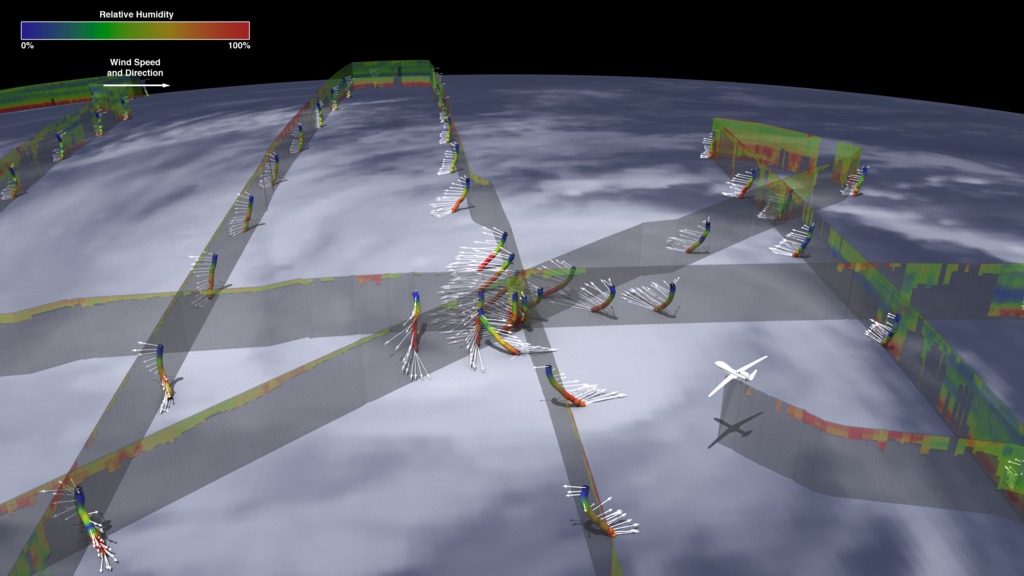Dropped into a Hurricane

Learn one of the ways scientists drop in to study hurricanes.
The swirling vortex of hurricane clouds are a familiar sight in satellite imagery, but in order to better understand these storms, scientists need to look inside them. In 2014, NASA's remotely piloted Global Hawk aircraft overflew Hurricane Edouard in the Atlantic Ocean to understand what makes hurricanes intensify into fiercer storms. During the 24-hour flight, a sounder instrument measured the relative humidity of the storm from above, where the cloud cover was thin. Where clouds were too thick, including around the eye of the hurricane, the Global Hawk released dropsondes, foot-long sensors that dropped from the aircraft down through the storm to the ocean's surface – sending humidity, temperature and wind speed data back the whole way down. Warm moist air gives hurricanes their strength, and near the eye, the red colors show high humidity powering the storm. Scientists use these and other data collected from these flights to better understand the environmental signals inside and outside of the hurricane that lead to rapid intensification where wind speeds dramatically increase in a 24-hour period – vital information for anyone in the storm's path. Watch the video to learn more.
Watch an animation of NASA's Global Hawk fly over Hurricane Edouard.

Hurricane Edouard was a Category 3 hurricane that formed in Sept. 2014 and stayed at sea.

Dropsonde sensors released from the Global Hawk allow scientists to collect data from the top of the clouds to the ocean surface.

By criss-crossing the hurricane, the Global Hawk gets a look at all parts of the storm.

Dropsonde data inside Edouard's eye show the curling winds that would otherwise be obscured by the thick clouds.
Credits
Please give credit for this item to:
NASA's Scientific Visualization Studio
-
Animator
-
Kel Elkins
(USRA)
-
Kel Elkins
(USRA)
-
Scientist
- Scott Braun (NASA/GSFC)
-
Producer
- Matthew R. Radcliff (USRA)
-
Writer
- Ellen T. Gray (ADNET Systems, Inc.)
Release date
This page was originally published on Monday, June 18, 2018.
This page was last updated on Wednesday, May 3, 2023 at 1:46 PM EDT.
![NASA's Global Hawk in 2014 traveled to the middle of the Atlantic and flew over Hurricane Edouard. Remote sensing nstruments on the plane measured temperature, relative humidity, wind speed, wind direction as well as other data. Along with measurements from the aircraft, NASA scientists also collected data from dropsondes that parachuted down through the hurricane.Complete transcript available.Music: Who Done It? by Robert Leslie Bennett [ASCAP]Watch this video on the NASA Goddard YouTube channel.](/vis/a010000/a012800/a012821/12821_HS3_dropsondes_youtube_1080.00555_print.jpg)
